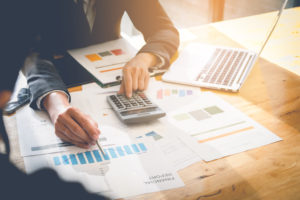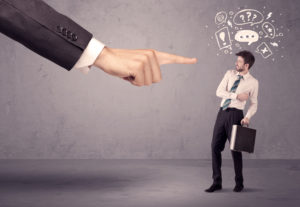How the Wealthy Use Strategic Debt, Inflation, and Opportunity Cost to Grow and Protect Their Assets
The wealthy understand and apply principles of money in ways that most people overlook. While the average person focuses on saving, paying down debt, and avoiding risk, the wealthy leverage financial tools to create opportunities, protect their assets from inflation, and increase their net worth over time. This difference in approach is one of the main reasons for the ever-widening disparity between the rich and the poor.
To engage in true wealth building, it’s essential to re-educate ourselves on how money, debt, and leverage really work. Building wealth isn’t just about accumulating cash; it’s about understanding how to put that cash to work in ways that multiply its impact. Good debt—debt used strategically to acquire income-generating or appreciating assets—is a powerful tool in this process, especially when paired with the time value of money and inflation.
While many people believe they understand leverage, they often avoid using it in their own lives. They work hard to pay off their mortgages, leaving their home equity untouched and unproductive, effectively earning a zero return on this major asset. Knowing what leverage is in theory is very different from putting it into practice. For those ready to explore true wealth-building strategies, it’s time to take a closer look at the principles of strategic leverage and good debt—the tools that the wealthy use to grow their wealth continuously, even as inflation erodes the value of cash.
Table of Contents
- Good Debt vs. Bad Debt
- Financial Leverage
- Inflation: The Hidden Ally in a Debt Strategy
- How Does Inflation Play Into Financial Leverage?
- Opportunity Cost of Paying Cash for a Car
- Risks of Leverage in a Down Market
- Importance of Cash Flow and Liquidity
- Prudent Leverage Ratios and Risk Management
- Conclusion
- Frequently Asked Questions
Good Debt vs. Bad Debt
Highlight: Not all debt is harmful—strategic good debt can be a wealth-building tool, unlike bad debt that burdens finances.
Not all debt is created equal. While most people think of debt as something to avoid, the wealthy understand that there’s a crucial difference between “good debt” and “bad debt.”
- Good Debt: Debt used to acquire assets that appreciate in value or generate income. For example, a mortgage on a rental property or a policy loan to finance a business expansion are forms of good debt. These debts support wealth-building activities and, when used prudently, create more value than they cost.
- Bad Debt: Debt used to purchase liabilities that depreciate in value, such as credit card debt for consumer goods or loans for a car that loses value over time. Bad debt burdens you with interest payments without generating any financial return, keeping you trapped in a cycle of repayment.
Here, we focus on good debt—strategic borrowing that allows you to leverage appreciating assets and create cash flow. This is the kind of debt the wealthy use to grow their wealth, while also allowing inflation to reduce the real cost of their debt over time.
Financial Leverage
Using financial leverage allows the wealthy to multiply their returns by investing more than they otherwise could. With the right structure, they’re able to earn on the value of the total investment, not just what they personally contribute.
Financial Leverage Example
Highlight: Leverage can amplify returns, turning a $1 million investment into control of $5 million in assets for a potential 35% return.
Let’s see how leverage can amplify returns. Instead of putting $1 million in the stock market, let’s say you take that $1 million (preferably as a policy loan from your cash value life insurance) and use it to buy 10 properties at 20% down—giving you a leverage ratio of 5-to-1.
These properties, each worth $500k, total $5 million. By leveraging $1 million, you’re now controlling $5 million worth of real estate. If property values increase by 7% in a year, your return is $350,000—a 35% return on your $1 million investment.
Because this debt is used to finance an appreciating, cash-flow-positive asset, it qualifies as good debt. Rental income covers the loan payments while inflation gradually reduces the real cost of the debt.
Leveraging Cash Value in Whole Life Insurance
Highlight: Whole life insurance policy loans allow wealth to grow uninterrupted while funding other investments.
One unique benefit of a properly structured whole life insurance policy is its cash value, which grows over time and can be used as collateral for loans. Unlike traditional bank loans, policy loans don’t require credit checks or lengthy applications; you can access funds quickly by using your cash value as security.
The real advantage? Your cash value continues to grow, even while you borrow against it. When you take a policy loan, you’re borrowing from the insurance company while your cash value remains intact, compounding uninterrupted. This feature lets you use your money in multiple ways simultaneously—earning compound interest in your policy while using the loaned funds for other investments.
Inflation: The Hidden Ally in a Debt Strategy
Highlight: Inflation reduces the real cost of debt, making strategic borrowing a powerful wealth-building tool.
One of the biggest advantages of using debt strategically is the impact of inflation. Inflation, typically around 3-4% annually, gradually reduces the purchasing power of money. This means that each dollar you repay in the future is worth less than it is today. By using debt to finance appreciating assets, you’re effectively repaying your loan with “cheaper” dollars as inflation continues over time.
Here’s how this works in your favor: if you borrow $100,000 today at a fixed interest rate, and inflation is 3% per year, the real value of each dollar you repay will decline by about 3% annually. In other words, inflation acts as an ally, helping you reduce the real cost of your debt.
This is one reason why the wealthy often prefer long-term debt on appreciating assets like real estate. They let inflation erode the real value of their debt over time, while their assets appreciate, creating a double benefit.
How Does Inflation Play Into Financial Leverage?
When you use debt or leverage to purchase an asset, you are buying the asset with future dollars. Due to inflation, money has a constantly changing value—it is constantly depreciating. This is what we mean by the time value of money.
Financial leverage isn’t just about increasing your returns. When combined with an understanding of the time value of money, it becomes a tool that amplifies wealth while accounting for inflation.
Opportunity Cost of Paying Cash for a Car
Highlight: Paying cash for a car can cost you $13,814 in lost investment returns over five years.
Imagine you want to buy a $50,000 car. You could pay cash or use a 0% financing option, freeing up your $50,000 to invest elsewhere at 5% annually.
| Year | Amount Paid for Car (financed) | Potential Investment Value (5% annual return) |
|---|---|---|
| Year 1 | $10,000 | $52,500 |
| Year 2 | $10,000 | $55,125 |
| Year 3 | $10,000 | $57,881 |
| Year 4 | $10,000 | $60,775 |
| Year 5 | $10,000 | $63,814 |
In five years, that $50,000 grows to $63,814, meaning the opportunity cost of paying cash was $13,814. Opportunity cost isn’t just about spending; it’s about what you miss by not investing.
Risks of Leverage in a Down Market
Leverage is powerful, but it can amplify losses in a downturn. If your leveraged property values drop, you may owe more than they’re worth. That’s why cash-flow-positive assets are key—they allow you to cover debt payments, so you can wait for market recovery.
Importance of Cash Flow and Liquidity
Cash flow helps manage debt, especially during downturns, while liquidity provides a buffer. Having cash reserves or accessible assets lets you cover expenses without selling leveraged assets at a loss. Aim for enough liquidity to cover 6-12 months of expenses and loan payments.
Prudent Leverage Ratios and Risk Management
Using leverage wisely means managing debt levels carefully. Here are a few guidelines:
- Loan-to-Value (LTV) Ratio: Keep this below 80% for real estate, allowing a cushion if values decline.
- Total Debt Exposure: Limit this to a manageable range, such as 50-60%, to reduce the impact of downturns.
- Borrow Against Cash-Flow-Positive Assets: Only leverage assets with reliable income to offset debt payments.
- Regular Review: Regularly assess leverage, cash flow, and liquidity to adapt to changes in markets and personal finances.
By following these principles, you can harness leverage responsibly, growing wealth over time without overextending.
Conclusion
The wealthy individual knows how to put their money to work within the current banking system, and make more money.
They understand the time value of money means that they should defer payment if possible.
They know that financial leverage means they can make more money if they have properly structured debt working on their behalf.
And they know that those that buy large purchases with cash, do so at an opportunity cost that should not be paid.
Next Steps: Unlock Wealth-Building with Strategic Debt
Discover How Strategic Debt Can Grow Your Wealth
Ready to leverage good debt and whole life insurance like the wealthy? Get a personalized consultation from our independent advisory team to explore how strategic debt can align with your financial goals.
- ✓ Receive a tailored analysis of leveraging debt for your investments
- ✓ Compare strategic debt with whole life insurance to other wealth-building tools
- ✓ Understand inflation benefits, policy loans, and cash flow strategies
- ✓ Get expert guidance on managing leverage risks and liquidity
Schedule your complimentary 30-minute strategic debt consultation today to build lasting wealth.
No obligation. No sales pressure. Just expert guidance to help you harness strategic debt for your financial future.
THE ULTIMATE FREE DOWNLOAD
The Self Banking Blueprint
A Modern Approach To The Infinite Banking Concept

Frequently Asked Questions
What is the difference between good debt and bad debt?
Good debt is used to acquire appreciating or income-generating assets, like a mortgage for rental property or a policy loan for business expansion. Bad debt finances depreciating liabilities, such as credit card debt for consumer goods, offering no financial return.
How does financial leverage help build wealth?
Financial leverage amplifies returns by allowing you to control more assets than your initial investment. For example, using $1 million to control $5 million in real estate can yield a 35% return on a 7% property value increase, far exceeding non-leveraged investments.
How does inflation benefit strategic debt?
Inflation reduces the real value of debt over time, meaning you repay loans with “cheaper” dollars. For instance, a $100,000 loan at 3% annual inflation becomes less costly as the purchasing power of each repaid dollar decreases.
What role does whole life insurance play in leveraging wealth?
Whole life insurance policies allow you to borrow against cash value without interrupting its growth. Policy loans, which require no credit checks, can fund investments while the cash value continues to earn compound interest, maximizing wealth-building potential.
What are the risks of using financial leverage?
Leverage can amplify losses in a down market, potentially leaving you owing more than an asset’s worth. To mitigate risks, focus on cash-flow-positive assets, maintain liquidity for 6-12 months of expenses, and keep loan-to-value ratios below 80%.




